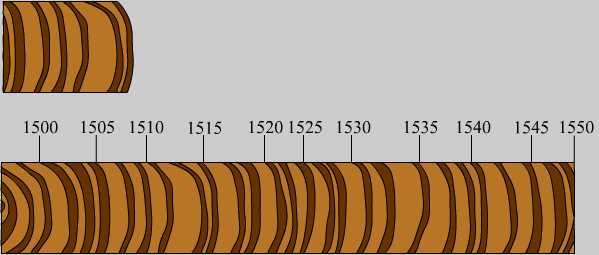 |
Part 3: Absolute DatingDendrochronology and Radiocarbon dating are two of the more common forms of absolute dating used in archaeology. In principle, they are very different. Dendrochronology relies upon establishing a timeline based upon patterns of tree-ring growth within a specific region and matching individual tree-ring samples within that master sequence. Radiocarbon dating is based on measuring the decay of the 14C isotope to calculate the age of dead plant or animal tissue. Using your knowledge of these two techniques, answer the following questions. 9. The piece of wood illustrated here comes from the foundation of an undated building. Using the master sequence represented below, what is the earliest date that the building could have been constructed? |
 |
|
10. Radiocarbon samples from three sites yield dates of AD 1500±40, AD1525±20, and AD 1545±20. From this information, is it possible to determine which site is the oldest? If so, which one? 11. What are the benefits and drawbacks of using dendrochronology or radiocarbon dating to determine accurate dates? |